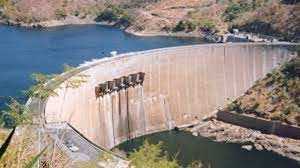
The Environment - The Zambezi River Authority has revealed that the water levels at Kariba Dam continue to recede, echoing concerns about water scarcity and power generation in the region.
In a statement, the authority’s Chief Executive Officer, Engineer Munyaradzi Munodawafa said the ongoing recession in the lake levels is primarily attributed to reduced rainfall activity in the Kariba catchment area and surrounding regions.
“The recession in the lake levels also continued from the previous update of 6th March 2024. This is due to low Lake inflows as a result of reduced rainfall activity on and around the lake and in the Kariba catchment generally.
Engineer Munodawafa said the effects of the El Niño phenomenon over the Southern African Region in particular have continued to negatively impact the Zambezi River inflows into Lake Kariba, a situation that continues to greatly impact the lake Kariba water levels,” Engineer Munodawafa said
Related Stories
The Kariba Dam Reservoir, with a maximum capacity to store 181 billion cubic metres of water, is a vital water resource for the region. However, the current water levels indicate a concerning state. Out of the total capacity, 116 BCM is designated as Dead Storage, while the remaining 65 BCM constitutes Live Storage, which is subject to fluctuations based on various factors such as rainfall patterns, evaporation rates, and power generation demands.
At present, the reservoir stands at a level of 477.54 metres above mean sea level, with a Live Storage of only 9.17 BCM, representing a mere 14.16% of its potential capacity. This emphasises the urgency of addressing the challenges faced by the Kariba Dam, as it plays a crucial role in providing water for irrigation, supporting ecosystems, and generating hydroelectric power for Zimbabwe and Zambia.
The dwindling water levels not only pose a threat to regional water security but also raise concerns about the sustainability of power generation from the dam.
With hydroelectricity being a significant source of energy for both countries, efforts must be intensified to mitigate the impact of climate variability and ensure the sustainable management of this vital resource.




















Leave Comments